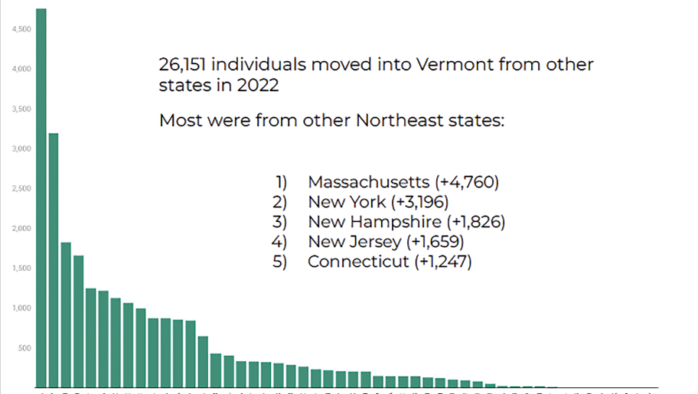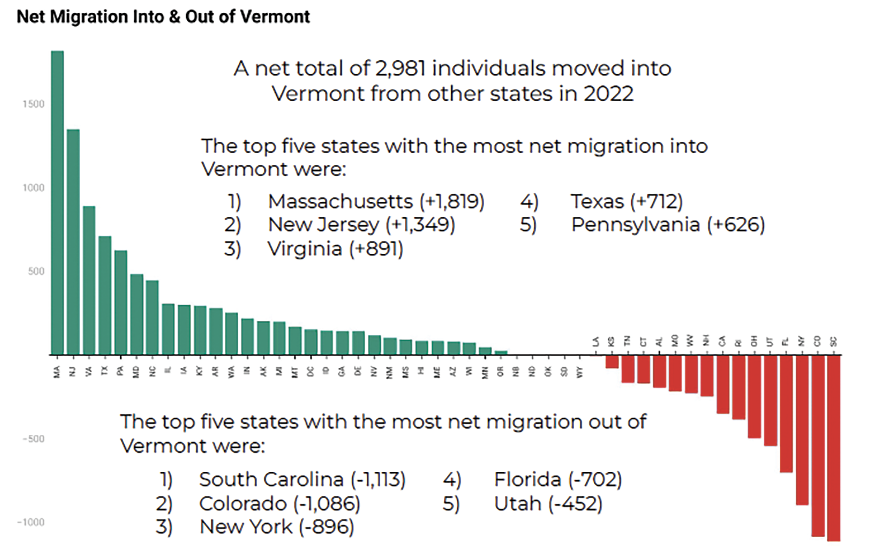In 2022, Vermont gained nearly 3,000 new residents who moved from other states, according to an analysis of data from U.S. Census Bureau published by the Treasurer’s Office, Nov. 6. The data, which is published annually around this time, is an important estimate of Vermont’s demographic trends, which have a direct impact on Vermont’s workforce, economy, and credit rating.
Vermont’s 2022 net migration of 2,981 people is slightly above average compared to the past decade, but sharply lower than 2021 when Vermont saw a net migration of 14,548 new residents. The combined net migration from the last two years, however, exceeds the net migration from the prior 10 years combined (+17,529 for 2022-21 vs. +16,067 for 2010-19).
Most people who moved into Vermont in 2022 came from nearby states in the Northeast, with more than half of new residents arriving from neighboring Massachusetts (4,760 moved to Vermont from Massachusetts, however, 2,941 moved to Massachusetts from Vermont, for a net migration of 1,819). The other states with the most net migration into Vermont were New Jersey (+1,349), Virginia (+891), Texas (+712), and Pennsylvania (+626).
The top 10 states overall for migration into Vermont were: Massachusetts, New York, New Hampshire, New Jersey, Connecticut, Virginia, Texas, Maine, North Carolina and Florida.
“Thanks in part to the flexibility of remote work, Vermont continues to be a desirable destination for those seeking a better quality of life,” said State Treasurer Mike Pieciak. “Data from the last two years shows progress on reversing Vermont’s long standing demographic challenges, which is a positive development, but it has also put immense pressure on our housing market.”
U.S. Census Data also revealed the primary motivation for moving whether within state or to another state involved housing. Specifically, individuals cited the desire for newer, larger, or better accommodations; establishing one’s own household; and pursuing more affordable housing options as primary motivators.
Treasurer Pieciak said, “This shows how important it is to address Vermont’s housing shortage. It’s not just holding back the full potential of our economy, it’s also worsening social issues like homelessness. It is why our office has prioritized housing as our top economic issue, and we’re eager to work with stakeholders to find creative solutions to our housing shortage to support a more prosperous future for all Vermonters.”
Pieciak recently announced the allocation of $55.5 million in housing investments from his Office’s 10% in Vermont local investment program. The funds will leverage an estimated $340 million in additional capital to support the construction of over 1,100 housing units across Vermont.

Courtesy Vt Treasurer’s Office
The population in Vermont continues to grow after the Covid pandemic surge in 2021.

Courtesy Vt Treasurer’s Office
The majority of Vermont’s new residents have come from other states in the Northeast.




